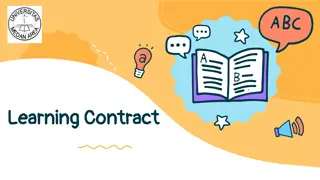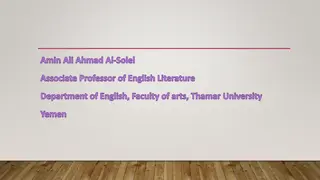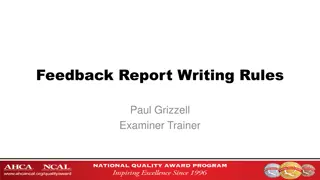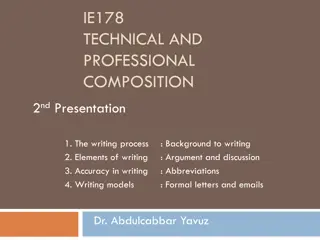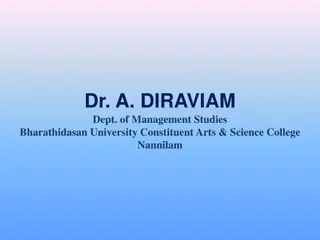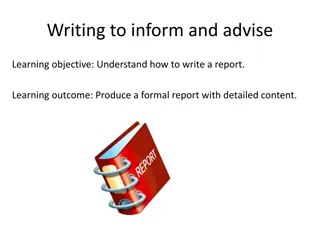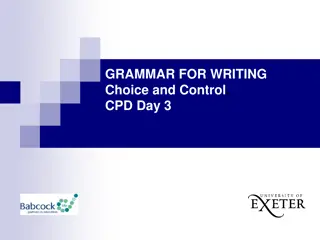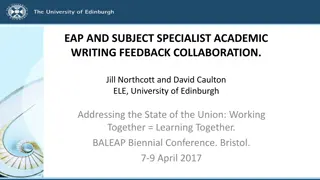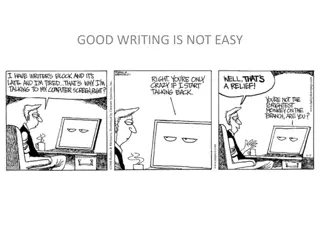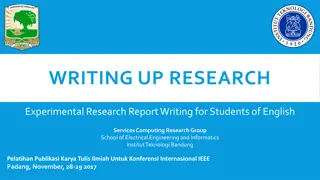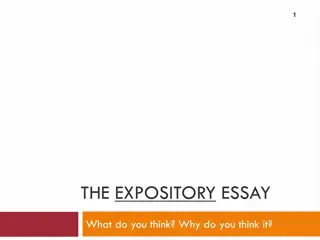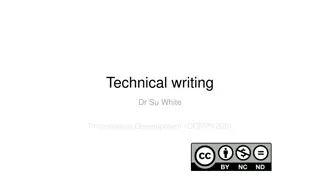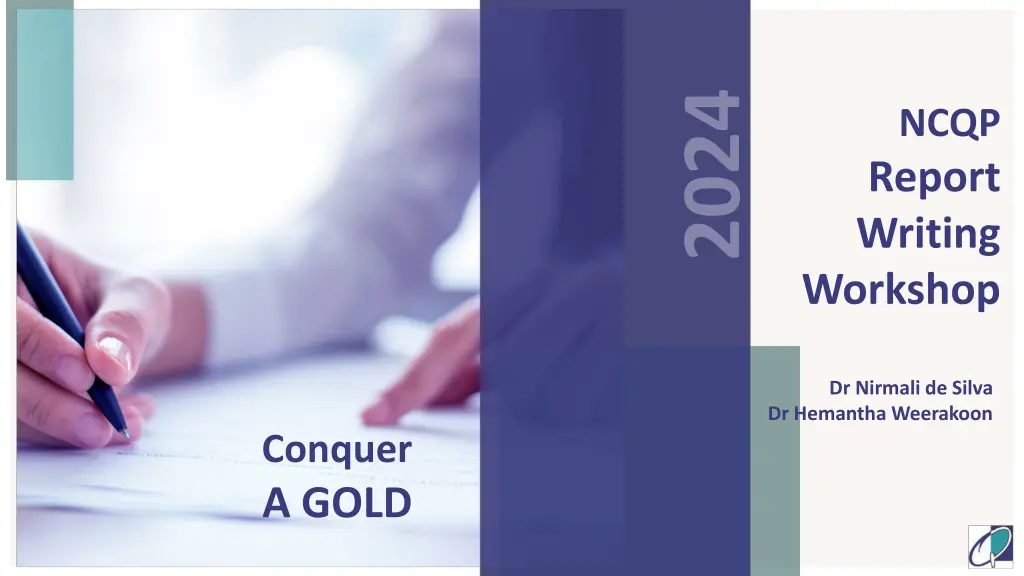
Advanced Techniques for Project Report Writing Workshop
"Enhance your report writing skills with expert knowledge shared by Dr. Nirmali de Silva and Dr. Hemantha Weerakoon at the NCQP Report Writing Workshop. Learn to structure project reports effectively and achieve excellence in conveying your ideas. Join us to conquer a gold standard in report writing."
Download Presentation

Please find below an Image/Link to download the presentation.
The content on the website is provided AS IS for your information and personal use only. It may not be sold, licensed, or shared on other websites without obtaining consent from the author. If you encounter any issues during the download, it is possible that the publisher has removed the file from their server.
You are allowed to download the files provided on this website for personal or commercial use, subject to the condition that they are used lawfully. All files are the property of their respective owners.
The content on the website is provided AS IS for your information and personal use only. It may not be sold, licensed, or shared on other websites without obtaining consent from the author.
E N D
Presentation Transcript
NCQP Report Writing Workshop Dr Nirmali de Silva Dr Hemantha Weerakoon Conquer A GOLD
Title page Registration No 23/qc/ Quality Control Circle Project Report by [Name of Team] of [Full Name Company and Location] For National Convention of Quality & Productivity NCQP 2024 [Project Title/Name] [Team Members ] 1. 2. 3. Project Duration: Start date End date
1. Summary /Abstract [300 words]
2. Introduction What was the problem? How did you select the project? What was the methodology? [describe the tools and techniques used]
3. Company Profile or Introduction to the Company [1 2 pages] What type of Organisation Main products and services Size and structure Turnover Local or export
4. Team profile [Horizontal Photograph] Name Role and Designation Name Role and Designation Name Name Name Role and Designation Role and Designation Role and Designation Must Include all members: Names Designations Role in QC team
5. Selection of the theme / problem for improvement a. Methods and/or tools used to select the project b. Alignment of the project to the organization's goals/ objectives/ vision c. Methods and tools used for target setting and explanation of reasons
6. Understand the current situation and set goals & targets a. Existing situation/ challenge/ problem/ practice/ opportunity b.Setting goals & targets c. Methods and/or tools used to identify and verify possible root cause(s)
7. Analyse the causes of the problem a. Analysis of cause(s) to the problem b.Analysis of data to select the final root cause(s) (Statistical data analysis as appropriate) c. Effectiveness of tools used throughout the project
8. Developing improvement measures & implementing solution/s a. Problem solving tools/methods used, innovative ideas, best practices considered, technologies leveraged/adopted/used to develop possible solutions b. Final selection of solution(s) (Statistical interpretations) c. Innovativeness/value-added or value creation, clarity from the final solution d. Stakeholder (SH) engagement/Co- creation e. Implementation plan & Implementation
9. Confirming the results a. Results achieved/productivity improved b.Impact of results to the organization's goals/objectives/vision c. Tangible benefits achieved and reported d.Intangible benefits achieved and reported
10. Standardising & maintaining / sustaining the improvement a. Sustainability of solution explained Standardisation of improvement b.Creation of spin-offs for other opportunities and/or continual improvement efforts
11. Conclusion a. The solution achieved b.To what extent and what difficulties arose c. Further improvements possible d. Recommendation for future projects It is good to mention this. a. Thankyou notes
12. References [if any] . Journal Papers Research articles Magazines Newspapers Source books
13. Appendices and attachments Include in the appendices any essential extra material, such as tables and graphs that support your research but don't relate directly to the discussion of your findings
Remember... The first thing you need to do is to identify your audience and what they need to know. Then think through what the report is about what information needs to be in it, what information is best left out? Also, remember that the key difference between an essay and a report is that an essay focuses on developing an argument or point of view, while a report centres on solving a problem and presenting research findings. You can also use headings (this is something you wouldn't do in an essay) to identify sections of the report (i.e., Discussion, Conclusion, etc.)
Certificates Will be given to Individual members in a team [up to 6 team members] and One certificate to the company with team name Any additional team members must be included in the report if they wish to be considered for a paid certificate IMPORTANT PLEASE type your name correctly to obtain the certificate in your name and follow instructions.
Report and Abstract The Report should be written first. Include graphs, tables, QC tools and others Try to include information in the report and then in the PowerPoint presentation so that the jury is able to quickly identify the value of your project. The Abstract must be written only after writing the report

